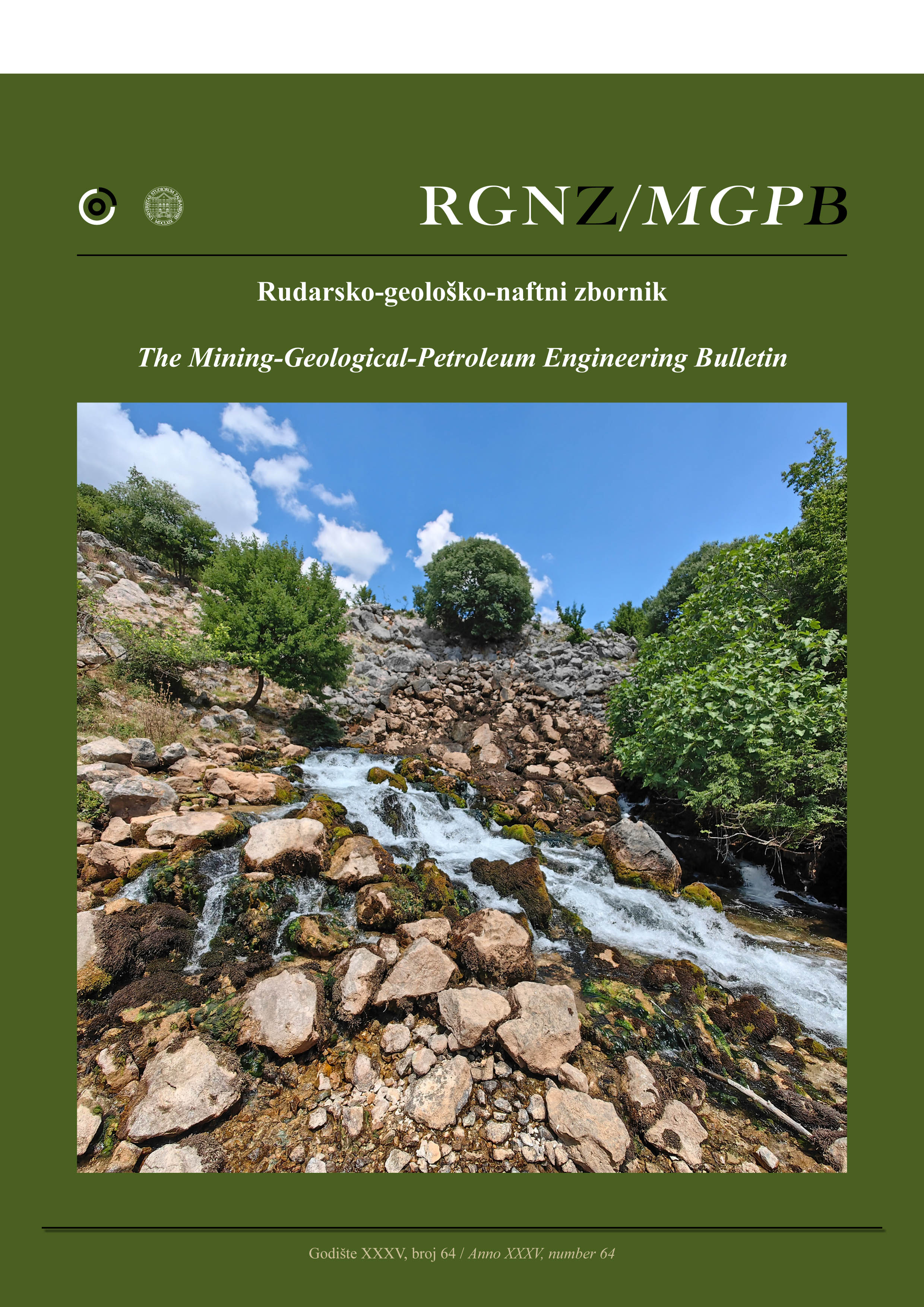Block model optimization and resource estimation of the Angouran Mine by transferring the exploratory data from the local coordinate system to the UTM
DOI:
https://doi.org/10.17794/rgn.2023.3.1Keywords:
resource estimation, utm, indicator kriging, simple kriging, inverse distance weightingAbstract
Resource estimation is one of the most important steps in the mining process. Precise resource estimation has a significant influence on the optimization of subsequent mining steps, i.e. mine planning and scheduling. The previous resource estimation in the Angouran Mine was conducted based on the provided information in the local coordinate system which causes considerable errors in estimations. Therefore, an attempt is made in this research to optimize the block model of the Angouran Mine and resource estimation based on the information in the UTM global coordinate system. For this purpose, exploratory data is firstly transferred from the local coordinate system to the UTM environment. Then, block model optimization is conducted using indicator kriging (IK) in which the waste blocks are removed and the block model was optimized. Finally, resource estimation is performed using the inverse distance weighting (IDW) and simple kriging (SK) methods. After variogram analyses in different directions, it was found that the mine deposit is anisotropic. Also, validation results showed that the acquired correlation coefficient in the carbonate and sulfide sections for IDW, SK and IK is 0.86, 0.87 and 0.92, and 0.88, 0.87 and 0.92, respectively. Finally, the obtained grades and tonnages are compared with the actual data of the exploratory boreholes, mined blocks and previous resource estimation in the mine. Comparative results showed that the obtained grades and tonnages from both previous and new models are over-estimated and higher than the actual values. The minimum errors of grade estimation equal 46% and 23.1% for previous and new resource estimations (before and after the waste removal), respectively. Also, the mining errors of tonnage estimation are 50.29% and 28.37% for previous and new models, respectively. This field comparison proved that transferring the exploratory data to the UTM system, utilization of the IK to remove the waste blocks and applying the SK for resource estimation lead to the optimization of the block model and a reduction in the estimation error compared to the previous estimations for the mine.
Downloads
Additional Files
Published
How to Cite
Issue
Section
License
Copyright (c) 2023 Mohammad Rezaei, Siavash Fallahi

This work is licensed under a Creative Commons Attribution 4.0 International License.
Creative Commons-BY
Authors who publish with this journal agree to the following terms:
In agreeing this form, you certify that:
- You read the ethical codex of the RGN zbornik available at journal web.
- You submitted work is your original work, and has not previously been published and does not include any form of plagiarism.
- You own copyright in the submitted work, and are therefore permitted to assign the licence to publish to RGN zbornik.
- Your submitted work contains no violation of any existing copyright or other third party right or any material of an obscene, libellous or otherwise unlawful nature.
- You have obtained permission for and acknowledged the source of any illustrations, diagrams or other material included in the work of which you are not the copyright owner.
- You have taken due care to ensure the accuracy of the work, and that, to the best of your knowledge, there are no false statements made within it.
- All co-authors of this submitted work are aware of, and in agreement with, the terms of this licence and that the submitted manuscript has been approved by these authors.
Publication licence
You retain copyright in your submitted work, according to journal license policy (CC-BY). By signing this form you agree that RGN zbornik may publish it under the publication licence. In summary the licence allows the following:
Anyone is free:
- To copy, distribute, display, and perform the work.
- To make derivative works.
Under the following conditions:
- The original author must always be given credit.
- The work may not be used for commercial purposes.
- If the work is altered, transformed, or built upon, the resulting work may only be distributed under a licence identical to this one.
Exceptions to the licence
In addition to publishing the work printed under the above licence, RGN zbornik will also enable the work to be visible online.
The journal editorial can change the licence rules anytime but it cannot retroactively restrict author(s) rights.


